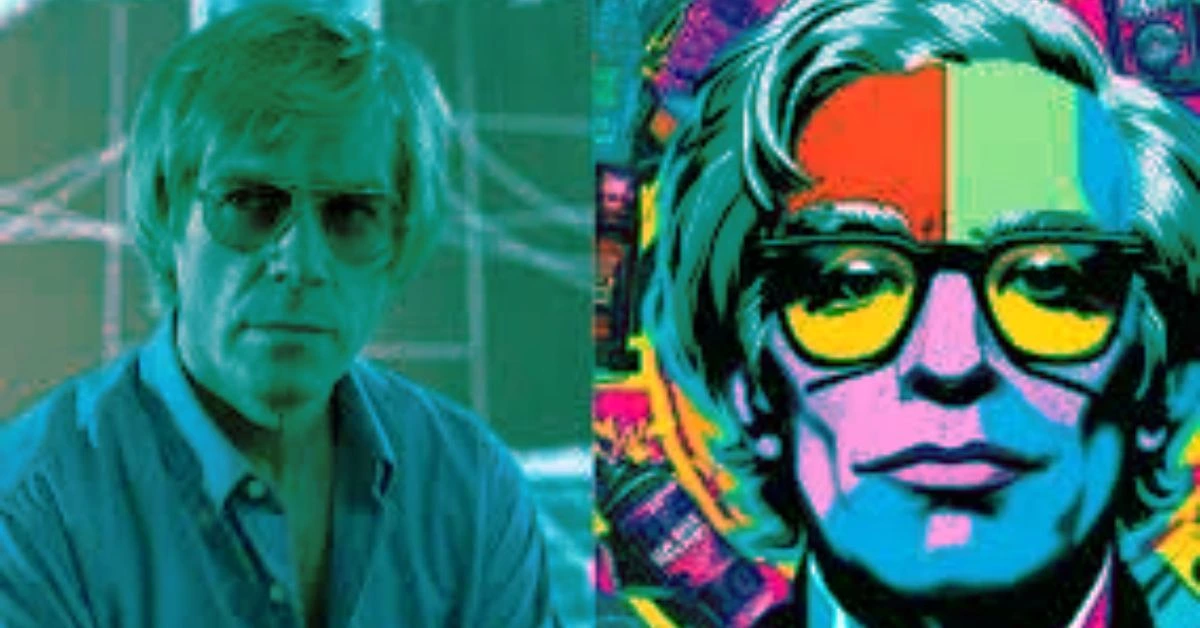AndyWarhella: Redefining Pop Art in the Digital Age
In the ever-evolving landscape of art, identity, and technology, the concept of “AndyWarhella” emerges as a reflection of how the digital age has transformed our understanding of creativity, fame, and personal identity. Rooted in the iconic ethos of Andy Warhol, the concept of “AndyWarhella” goes beyond just art—it embodies the intersection of mass production, celebrity culture, and the commodification of identity in the modern world. This article will explore the multifaceted nature of AndyWarhella, delving into its cultural relevance, historical background, and how it continues to shape contemporary expression in the digital era.
What Is AndyWarhella?
AndyWarhella is not just a term; it is an artistic and cultural framework that captures the essence of Andy Warhol’s pioneering approach to art, fame, and consumerism while integrating the contemporary forces of the digital world. It stands as a lens through which we can examine the fusion of traditional artistic methods and the pervasive influence of the internet and social media.
The central themes of AndyWarhella mirror the ethos of Warhol’s Pop Art movement, which celebrated the mass production of art, the commodification of everyday objects, and the fascination with celebrity culture. Much like Warhol’s famous works featuring Campbell’s Soup Cans or portraits of Marilyn Monroe, AndyWarhella acknowledges the viral nature of fame and the way technology amplifies it. Today, the art of being recognized—whether as an influencer, a creator, or even a meme—has become as important as creating art itself.
AndyWarhella celebrates how technology and social media platforms have enabled individuals to craft and curate their identities, elevating the pursuit of recognition into an art form of its own. It speaks to how individuals, through their digital personas, manipulate their image for visibility and fame in a hyperconnected world, much like Warhol’s exploration of celebrity culture.
The Legacy of Andy Warhol
To understand AndyWarhella, it is crucial to first revisit the life and legacy of Andy Warhol—the groundbreaking artist whose work continues to influence and challenge the boundaries of art, identity, and culture. Warhol was a pioneer in the Pop Art movement, and his approach to art was radical for its time. By embracing consumer goods, mass production techniques, and celebrity portraits, Warhol blurred the lines between high art and popular culture.
Warhol’s famous works—such as the Campbell’s Soup Cans and Marilyn Monroe series—redefined what was considered “art” by elevating mundane, everyday objects and icons of fame to the status of fine art. He famously declared, “In the future, everyone will be world-famous for 15 minutes.” This notion of ephemeral fame has never been more relevant than it is today, where the internet and social media have created a platform for instantaneous global recognition.
Much like Warhol’s experiments with silkscreen printing, which reproduced images multiple times to emphasize the theme of mass production, AndyWarhella underscores the role that repetition and viral content play in modern identity creation. Social media platforms like Instagram and TikTok allow individuals to continuously curate their lives for public consumption, and in doing so, they participate in a modern-day version of Warhol’s “15 minutes of fame.”
The Digital Age and “AndyWarhella”
The rise of the digital revolution has fundamentally changed how we interact with art, culture, and identity. AndyWarhella serves as a reflection of this transformation—an embodiment of how Warhol’s principles continue to evolve in the digital age.
With the advent of social media, the concept of creating, consuming, and interacting with art has become democratized. Unlike traditional galleries or exhibitions, where only select individuals could access and appreciate art, platforms like Instagram, YouTube, and TikTok have transformed the everyday user into a potential creator. These platforms act as modern canvases, allowing anyone with a smartphone to become an artist and curate their image for an audience of millions.
In a world where fame is increasingly commodified, AndyWarhella explores how influencers, memes, and viral trends are the new icons of popular culture. Just as Warhol used repetitive imagery to create a dialogue about mass production and consumerism, modern-day creators use repetitive content and viral challenges to capture the public’s attention. Whether through selfies, viral dances, or sponsored content, today’s digital world thrives on replicable content that can spread across the globe in seconds.
Artistic Identity in the Era of “AndyWarhella”
One of the most fascinating aspects of AndyWarhella is its exploration of identity in the digital age. The modern digital space has made it easier for individuals to shape and redefine their identities, turning their lives into works of art that are carefully curated and staged. Whether on Instagram, TikTok, or YouTube, creators design their personal brand with the same attention to detail that an artist might give to a canvas.
Much like Warhol’s use of celebrity figures such as Marilyn Monroe or Elvis Presley, AndyWarhella reflects the growing trend of individuals commodifying their own identity for recognition and fame. Social media influencers have become the new celebrities, embodying an era where fame is determined not by traditional means (like film or television) but by how much engagement and visibility one can garner.
However, this quest for recognition often raises questions about the authenticity of these online personas. The tension between authenticity and performance is a key theme in AndyWarhella. Are we truly expressing ourselves, or are we merely performing an idealized version of our lives for an online audience? In this way, AndyWarhella interrogates the superficiality of modern identity, much as Warhol explored the depth (or lack thereof) in the public personas of celebrities.
The Role of Commercialism in “AndyWarhella”
At the heart of both Warhol’s art and the concept of AndyWarhella is the notion of commercialism. Warhol famously embraced consumer culture, making objects like soup cans, Brillo boxes, and Coca-Cola bottles the subjects of his art. He blurred the lines between art and commerce, and his approach to business and art became a model for future generations of artists.
In the modern world of AndyWarhella, the commodification of identity is just as prevalent. Influencers and creators have turned their personal brands into highly marketable commodities. From sponsored posts and advertisements to the sale of merchandise, digital creators often monetize their online personas, transforming their images into profitable ventures. This echoes Warhol’s philosophy that art is business and business is art.
Through sponsored content, affiliate marketing, and the creation of personal brands, modern creators walk the fine line between self-expression and commercial success. Just as Warhol’s art blurred the lines between artistic expression and commercial products, AndyWarhella invites us to consider the extent to which personal identity has become a product in today’s digital economy.
Celebrity Culture and “AndyWarhella”
Celebrity culture has always been a central theme in Warhol’s work, and AndyWarhella takes this idea and applies it to the digital age. In Warhol’s time, fame was a curated phenomenon, with a few select individuals—Marilyn Monroe, Elvis Presley, and Elizabeth Taylor—occupying the public’s attention. Today, however, fame is far more democratized. Anyone with the right content, timing, and viral moment can gain celebrity status.
Platforms like TikTok have made it possible for unknown individuals to achieve instantaneous fame through viral trends, challenges, and memes. AndyWarhella reflects this cultural shift, where the traditional gatekeepers of fame (such as film studios, record labels, and the media) are replaced by algorithms and audience engagement.
This new form of celebrity culture has given rise to a new kind of creator—one who is not just an artist but also a self-promoter, continuously crafting their image and identity for maximum visibility. Like Warhol’s obsession with icons and fame, AndyWarhella reveals the interplay between self-promotion and artistic expression in the digital realm.
Critiques and Controversies Surrounding “AndyWarhella”
While AndyWarhella celebrates the intersection of art, technology, and identity, it is not without its critiques. One of the major criticisms revolves around the commodification of identity. Detractors argue that in the digital world, authenticity is often sacrificed for visibility and commercial success. The rise of influencers and the culture of viral content have created an environment where self-expression is often reduced to mere performance, which some argue leads to a loss of genuine individuality.
Additionally, the emphasis on virality and quick recognition can overshadow more meaningful forms of artistic exploration. Just as Warhol faced criticism for prioritizing commercial appeal over traditional artistic merit, AndyWarhella raises questions about whether the digital age’s focus on instant fame diminishes the value of thoughtful, introspective art.
The Future of “AndyWarhella”
As technology continues to advance, the concept of AndyWarhella will undoubtedly evolve. New trends, such as NFTs, virtual reality, and AI-driven art, are blurring the boundaries between physical and digital art, opening up new possibilities for creators. The rise of these technologies will likely continue to reshape the ways in which we think about art, identity, and fame.
In the future, AndyWarhella may adapt to these emerging platforms, embracing new forms of digital expression and creating new challenges for artists who navigate the tension between personal expression and commercial viability. The spirit of AndyWarhella will continue to inspire generations of creators, encouraging them to explore the limitless possibilities of art in the digital age.
Conclusion
AndyWarhella is more than just a reflection of Andy Warhol’s artistic legacy—it is a comprehensive framework that explores the ways in which art, identity, and technology intersect in the modern world. Rooted in the Pop Art movement and Warhol’s exploration of mass production, celebrity culture, and commercialism, AndyWarhella speaks to the ways in which today’s creators craft their identities for a global audience.
As digital technology continues to evolve, so too will the ways in which we create, consume, and relate to art. Whether through the lens of influencers, memes, or viral trends, AndyWarhella will continue to shape the dialogue between art, fame, and identity in the digital age. The future of creativity is digital, and AndyWarhella is its guiding framework, challenging us to think critically about how we navigate the complexities of self-expression in a connected, commercialized world.




